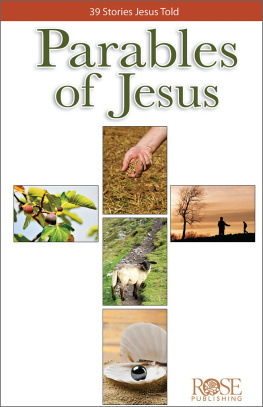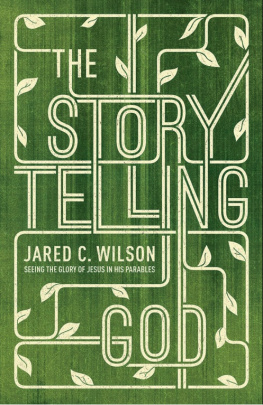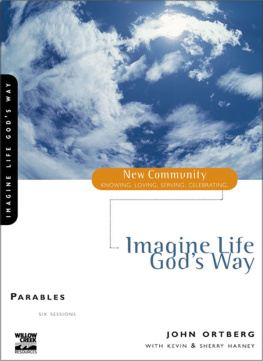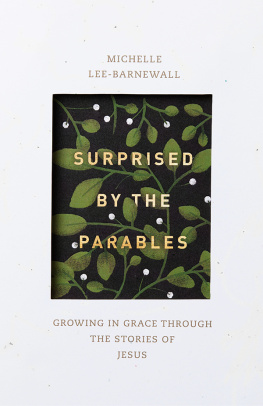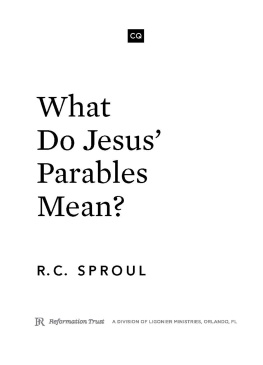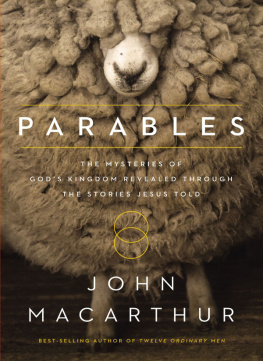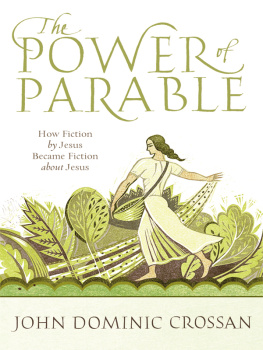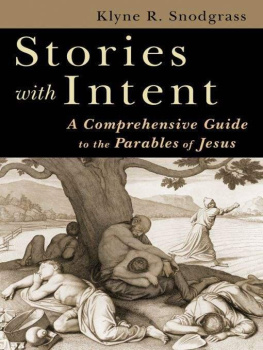2017 by David B. Gowler
P.O. Box 6287, Grand Rapids, MI 49516-6287
All rights reserved. No part of this publication may be reproduced, stored in a retrieval system, or transmitted in any form or by any meansfor example, electronic, photocopy, recordingwithout the prior written permission of the publisher. The only exception is brief quotations in printed reviews.
Library of Congress Cataloging-in-Publication Data is on file at the Library of Congress, Washington, DC.
Unless otherwise indicated, Scripture quotations are from the New Revised Standard Version of the Bible, copyright 1989, by the Division of Christian Education of the National Council of the Churches of Christ in the United States of America. Used by permission. All rights reserved.
Unless otherwise indicated, Scripture quotations appearing in the expositions of the church fathers are in the form in which those quotations appear in the ANF and NPNF translations of those works under discussion.
Endorsements
This wonderfully engaging volume offers a rich array of insights, as the author introduces us to a chorus of diverse voices from a wide variety of media. David Gowlers immense learning is expressed with superb clarity, making interpretations of the parables across two millennia accessible to all. Highly recommended.
Christine Joynes , Centre for Reception History of the Bible, University of Oxford
For most of its history, parable research has, perhaps rightly, focused on the composition history of Jesuss parables from the oral period in which they were spoken to their placement in the Christian Gospels. David Gowler has studied, taught, and written about the parables for many years, and in this fascinating study he has trained his eagle eye on the latter part of the parables careerthe impact of their afterlife on the literature, music, and art that stand as heirs to this remarkable corpus of stories. Arranged chronologically, Gowlers study spans two thousand years of reception. This treasure trove belongs in the library of anyone interested in the ways Jesuss parables have challenged our hearts, minds, and imaginations, and it confirms that the world the parables has produced is no less interesting and complex than the world that produced the parables.
Mikeal C. Parsons , Baylor University
David Gowler invites us to participate in a two-thousand-year-old dialogue with those seeking to understand and implement the simple, yet often perplexing, parables of Jesus. Gowler has assembled fifty conversation partners from literature, poetry, hymns, the visual arts, and theater that span the Christian era. These voices hail from a broad and diverse range of historically, theologically, and culturally significant contexts. By entering into this dialogue, Gowler hopes that rather than find what we expect to find in the parables, we can take off our own interpretive blinders and come to a fuller understanding of the meanings and applications of the parables to our lives. He succeeds! The conversation in which he engages us here is truly an eye-opening and enriching experience.
Duane F. Watson , Malone University
If the parables stimulate your mind, feed your soul, upset your values, and occasionally confuse you, youre in good company. Exegetes, poets, hymn writers, allegorists, social reformers, novelists, and painters feature in this brisk tour through two thousand years of parable interpretation, often urging readers to see more in the parables or to view them through a different set of eyes. As a knowledgeable guide through a lively history, David Gowler highlights the evocative interpretations that emerge when a parable encounters a fertile imagination.
Matthew L. Skinner , Luther Seminary
Dedication
In memory of
Robert Warren Runnels
(March 3, 1934June 13, 1991)
and
Gary Warren Gowler
(December 30, 1953April 8, 2013)
Epigraph
Then the king will say to those at his right hand, Come, you that are blessed by my Father, inherit the kingdom prepared for you from the foundation of the world; for I was hungry and you gave me food, I was thirsty and you gave me something to drink, I was a stranger and you welcomed me, I was naked and you gave me clothing, I was sick and you took care of me, I was in prison and you visited me.
Matthew 25:3436
Contents
Cover
Title Page
Copyright Page
Endorsements
Dedication
Epigraph
List of Illustrations
Preface
Abbreviations
Introduction
1. The Afterlives of Jesuss Parables in Antiquity (to ca. 550 CE)
Irenaeus
The Gospel of Philip
Clement of Alexandria
Tertullian
Origen
John Chrysostom
Augustine
Macrina the Younger
Ephrem the Syrian
The Good Shepherd in Early Christian Art
Oil Lamp
Roman Catacombs
Dura-Europos House Church
Illuminations from the Rossano Gospels
Byzantine Mosaics, Christ Separating Sheep from Goats , SantApollinare Nuovo (Ravenna, Italy)
Romanos the Melodist
2. The Afterlives of Jesuss Parables in the Middle Ages (ca. 5501500 CE)
Gregory the Great
Sahih al-Bukhari
Wazo of Lige
The Golden Gospels of Echternach
The Laborers in the Vineyard
The Wicked Tenants
The Great Dinner
The Rich Man and Lazarus
Theophylact
Hildegard of Bingen
Chartres Cathedral
Bonaventure
Thomas Aquinas
Antonia Pulci
Albrecht Drer
3. The Afterlives of Jesuss Parables in the Sixteenth and Seventeenth Centuries
Martin Luther
Anna Jansz of Rotterdam
John Calvin
John Maldonatus
William Shakespeare
Domenico Fetti
George Herbert
Roger Williams
Rembrandt Harmenszoon van Rijn
John Bunyan
4. The Afterlives of Jesuss Parables in the Eighteenth and Nineteenth Centuries
William Blake
Sren Kierkegaard
Frederick Douglass
Fanny Crosby
Leo Tolstoy
John Everett Millais
Emily Dickinson
Charles Haddon Spurgeon
Adolf Jlicher
5. The Afterlives of Jesuss Parables in the Twentieth and Twenty-First Centuries
Thomas Hart Benton
Parables and the Blues: Rev. Robert Wilkins
Flannery OConnor
Martin Luther King Jr.
Godspell
Two Latin American Receptions
The Peasants of Solentiname
Elsa Tamez
David Flusser
Octavia Butler
Thich Nhat Hanh
Conclusion: What Do Parables Want?
Appendix: Descriptions of the Parables Cited in the Interpretations
Works Cited
Scripture Index
Subject Index
Back Cover
Illustrations
- Figure 1.1 Domitilla catacomb, Good Shepherd
- Figure 1.2 Dura-Europos house church, Good Shepherd
- Figure 1.3 Rossano Gospels, Good Samaritan
- Figure 1.4 Rossano Gospels, Wise and Foolish Bridesmaids
- Figure 1.5 SantApollinare Nuovo (Ravenna, Italy), Fifth-century mosaic, Sheep and Goats
- Figure 2.1 Golden Gospels of Echternach, Laborers in the Vineyard
- Figure 2.2 Golden Gospels of Echternach, Wicked Tenants
- Figure 2.3 Golden Gospels of Echternach, Great Dinner
- Figure 2.4 Golden Gospels of Echternach, Rich Man and Lazarus
- Figure 2.5 Albrecht Drer, The Prodigal Son amongst the Pigs
- Figure 3.1 Domenico Fetti, The Mote and the Beam
- Figure 3.2 Domenico Fetti, The Parable of the Lost Coin
- Figure 3.3 Domenico Fetti, The Unmerciful Servant


